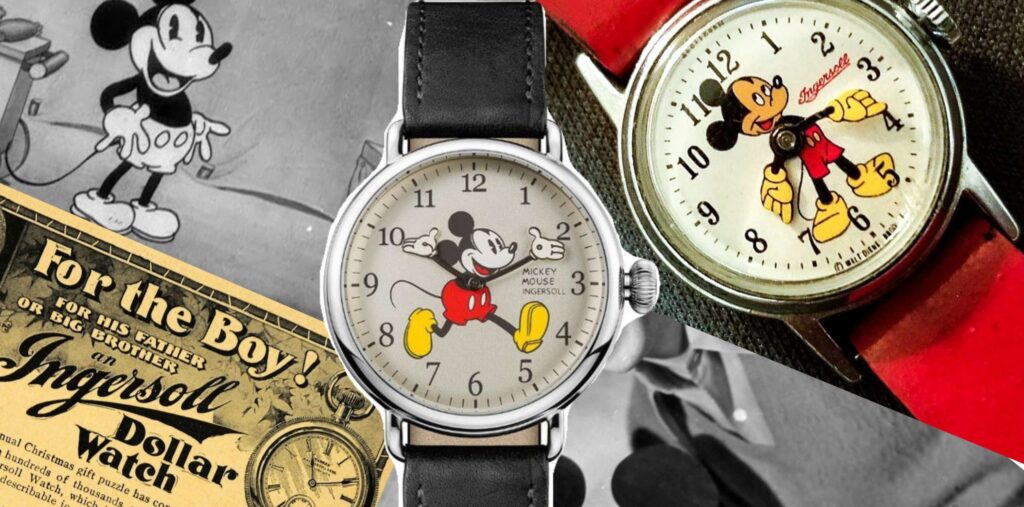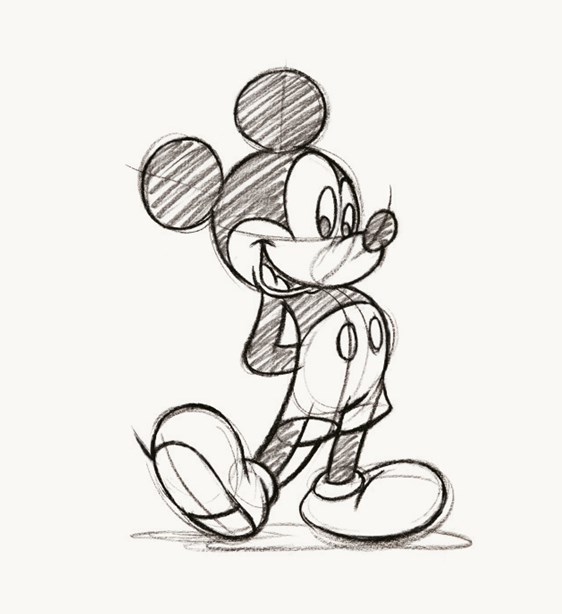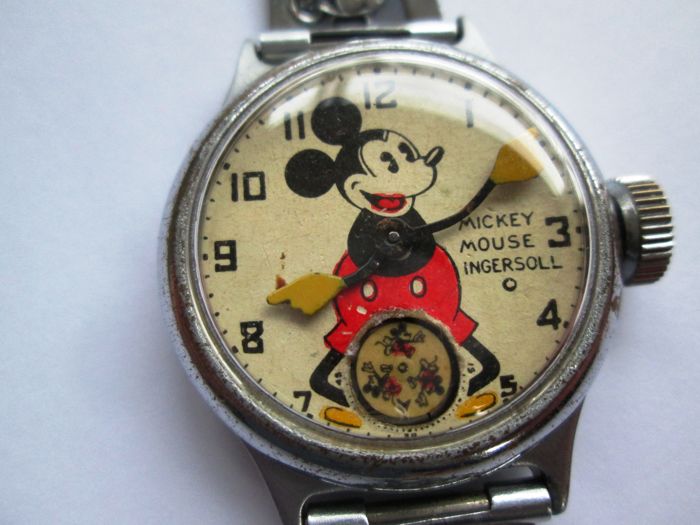
Being no strangers to branding, licensing, and marketing, the Walt Disney Company has lent its name to a wide variety of toys, trinkets, and other merchandise—for nearly a century. Variety aside, one particular player in their branding history tends to be “the leader of them all”: The Mickey Mouse Watch. As a practical piece of time-telling marketing, the Mickey Mouse Watch has become part of the greater narrative of American industry and success. As well, it was Disney’s first major breakthrough in the early days of their licensing endeavors. Coming to the market at a time of great economic strife (the Great Depression), Mickey’s marriage to timekeeping helped keep both Disney—and the watch company that first kicked off this union—from the brink. So, moving ahead, we’ll be having a look at this fascinating historical vignette, from its initial conception to where it stands today.
Mickey’s Marketing Origins:

Initial sketches of cartoon mice, literally surrounding Walt Disney’s head, were first drawn up by an animation partner—Hugh Harman of UB Iwerks—in 1925. This original spark would later inspire Walt Disney to create America’s most famous mouse. Originally slated to be named Mortimer Mouse (later changed to “Mickey” at the behest of Walt’s wife Lillian), this steamboat riding rodent had a humble start. With the success of Mickey’s brother Oswald the Lucky Rabbit in 1927, Disney and his Iwerks animation partners began working on Mickey Mouse by the following year. Since Walt had lost money on selling the rights to Oswald, he decided to make Mickey a more profitable venture for both himself and his partner—Roy Disney. Being initially strapped for cash, the first merchandising deal Disney made (4 years before any watch) was with a Mickey-struck stranger in a hotel lobby. This gentleman was crafting writing tablets for schoolchildren and bought the first licensing rights from Walt Disney for just $300 (worth ~$4,400 today). After the general success of Steamboat Willie from 1928-1929, a few more syndication and marketing deals were struck—but a key partner came into the picture in 1932. This partner would fundamentally change Disney’s marketing game in the coming decades.
“Kay” Kamen and Ingersoll-Waterbury:
As it were, Mickey Mouse Watch branding was devised by a marketing guru named Herman “Kay” Kaymen. In 1932, Kaymen signed a 50/50-split deal with the Disney bros. for all licensing profits. Effective immediately, “Kay” Kaymen put himself to work on what would be one of the most successful merchandising enterprises in history. With an extensive marketing background, charismatic demeanor, and business savvy mind, Kaymen was able to make connections with plethora companies on behalf of Disney.
With multiple takers already in tow, the first major success in marketing Mickey Mouse came from a horological licensing deal. As it were, “Kay” Kaymen struck a deal with Ingersoll-Waterbury Watches within the very first year of his partnership with Walt and Roy Disney. At the time, Ingersoll-Waterbury was on the brink of financial collapse. However, Kaymen’s licensing deal with their brand put both Mickey and Ingersoll on the wrists—and in the pockets—of millions of Americans. This deal effectively saved the Ingersoll brand and put millions of dollars into Disney’s coffers. Selling at $3.25 a pop—then eventually $2.95 per watch—the wristwatch version of these timepieces ended up being the most popular. However, at $1.50 a piece, the pocket watch version of these watches also fared quite well—and is now more collectible than the more mass-produced wristwatches.
Timekeeping Continues:

Forward from the 1930s, the Ingersoll-built Mickey Mouse Watch sold with continued popularity. Eventually becoming US Time, then Timex, the Ingersoll-Timex brand carried Mickey Mouse watches until 1971. In 1972, another big Disney character stepped into the world of watches: Goofy. These Helbros designed Disney watches featured Goofy’s arms as the hands—much akin to the Mickey watches—but reversed the movement of said hands for comedic effect. With some time, many watch brands—including the original Ingersoll—began re-releasing Mickey Mouse watches. By the 1990s, and up until today, other companies such as Elgin, Lorus, Seiko, Fossil, Colibri, and Disney Time Works have all put their own unique twist on the Mickey Mouse style.
The continued manufacture of Mickey Mouse and Disney watches is a testament to Disney’s original merchandising successes. Their partnership with “Kay” Kaymen in the early 1930s, and a successful history of creative animation, have cemented their brand into the greater narrative of America success. With some original timepieces auctioning in the thousands, Mickey Mouse watches haven’t lost their potency as collectible timepieces. Indeed, even to-this-day, some high-end luxury brands feature the happy-go-lucky poster child of Disney on their dials. So, if you happen to find yourself wearing a newer version of a Mickey watch—or if you have an original Ingersoll—keep it close. They continue to hold their value over time. Likewise, they will surely continue to hold fast as Disney moves into its 2nd century of entertainment and timekeeping.
Times Ticking has been in operation for more than 30 years, since 1982. We have performed watch repair for customers both locally and internationally. If it Ticks! We KNOW it! Our team of watch repair technicians have a combined experience in watchmaking of over 120 years.

